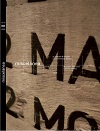The Patriarch’s Balls: Class-Consciousness, Violence, and Dystopia in George Saunders’ Vision of Contemporary America
DOI:
https://doi.org/10.26754/ojs_misc/mj.20157207Palabras clave:
contemporary US literature, systemic violence, class, critical theory, George SaundersResumen
In late 19th Century America, the elite of wealthy New York families were united by the Patriarch’s Balls. The Society of the Patriarch organized lavish balls to foster a content class-consciousness among the society of “The Four Hundred” who mattered, in contrast to the rest who did not. In 21st Century America, the tables have been turned and the class conscious are less able to enjoy the fruits of their labor sans guilt (or the realization of a nasty pun). As Slavoj Zizek asserts in Six Sideways Glances on Violence, contemporary America’s “culture of capital” is marked by the systemic violence that allows the West to maintain its First World status and North American writer George Saunders, for one, knows it. This paper will look at how Saunders returns to those East Coast, greater New York communities in the 21st Century, communities that are now more egalitarian and “open” yet just as worried about keeping up with the Joneses. Writing their stories with a dystopic twist, he intimately explores the anxieties that plague their communities, while also maintaining a sense of the universal in his work that allows for its wider interpretation and relevance to the American national identity in general. Saunders writes as the moral conscience of a community that while “successful” according to American standards, cannot help but feel all the dirtier after the help have cleaned the kitchen.
Descargas
Referencias
Benito, Jesús and Ana Manzanas. 1994. “Introduction”. In Equiano, Olaudah, La interesante narración de Olaudah Equiano, o Gustavus Vassa, El Africano, escrita por sí mismo. Trans. and ed. Jesús Benito and Ana Manzanas. León: Secretariado de Publicaciones, Universidad de León: 10-50.
Bloom, Paul, Steve Hoeffler, Kevin Keller, and Carlos Meza. 2006. “How Social-Cause Marketing Affects Consumer Perceptions”. Sloan Review 47. MIT Sloan Management Review. <http://sloanreview.mit.edu/article/how-socialcause-marketing-affects-consumerperceptions/>. Accessed December 3, 2014.
Foucault, Michel. (1975) 1977. Discipline and Punish: The Birth of the Prison. Trans. A. Sheridan. New York: Random House.
Galtung, Johan. 1969. “Violence, Peace, and Peace Research”. Journal of Peace Research 6 (3): 167-91.
Girard, René. (1972) 1979. Violence and the Sacred. Trans. P. Gregory. Baltimore: The Johns Hopkins U.P.
Jameson, Fredric. (1981) 1983. The Political Unconscious. London and New York: Routledge.
Manzanas, Ana. 2014. “Guest Object on the Lawn: George Saunders’ ‘The Semplica Girl Diaries’”. Unpublished paper.
Olmstead, Robert. 2013. “War and Baked Beans”. The New York Times. (October 2). <http://opinionator.blogs.nytimes.com/2013/10/02/war-and-baked-beans/?_r=0>. Accessed April 20, 2014.
Pogell, Sarah. 2011. “‘The Verisimilitude Inspector’: George Saunders as the New Baudrillard?” Critique: Studies in Contemporary Fiction 52 (4): 460-478.
Rando, David. 2012. “George Saunders and the Postmodern Working Class”. Contemporary Literature 53 (3): 437-460.
Saunders, George. 2013a. “George Saunders Interview: Tenth of December”. The Huffington Post. (February 28). <http://www.huffingtonpost.com/cynthia-ellis/georgesaunders-interview_b_2768172.html>. Accessed November 13, 2014.
—. 2013b. “The Semplica Girl Diaries”. Tenth of December. London: Bloomsbury: 109-168.
Slotkin, Richard. 1973. Regeneration Through Violence: The Mythology of the American Frontier. Middletown: Wesleyan U.P.
Stowe, Harriet Beecher. (1852) 2005. Uncle Tom’s Cabin. The United States: Dover Thrift.
Weininger, Elliot. 2004. “Pierre Bourdieu on Social Class and Symbolic Violence”. In Wright, Erik (ed.) Approaches to Class Analysis. Cambridge: Cambridge U.P: 119-71.
Willis, Susan. 1985. “Crushed Geraniums: Juan Francisco Manzano and the Language of Slavery”. In Davis, Charles T. and Henry Louis Gates (eds.) The Slave’s Narrative. New York: Oxford U.P.: 199-224.
Zizek, Slavoj. 2008. Violence: Six Sideways Reflections. New York: Picador.
Descargas
Publicado
Número
Sección
Licencia
Derechos de autor 2015 Juliana Nalerio

Esta obra está bajo una licencia internacional Creative Commons Atribución-NoComercial 4.0.


